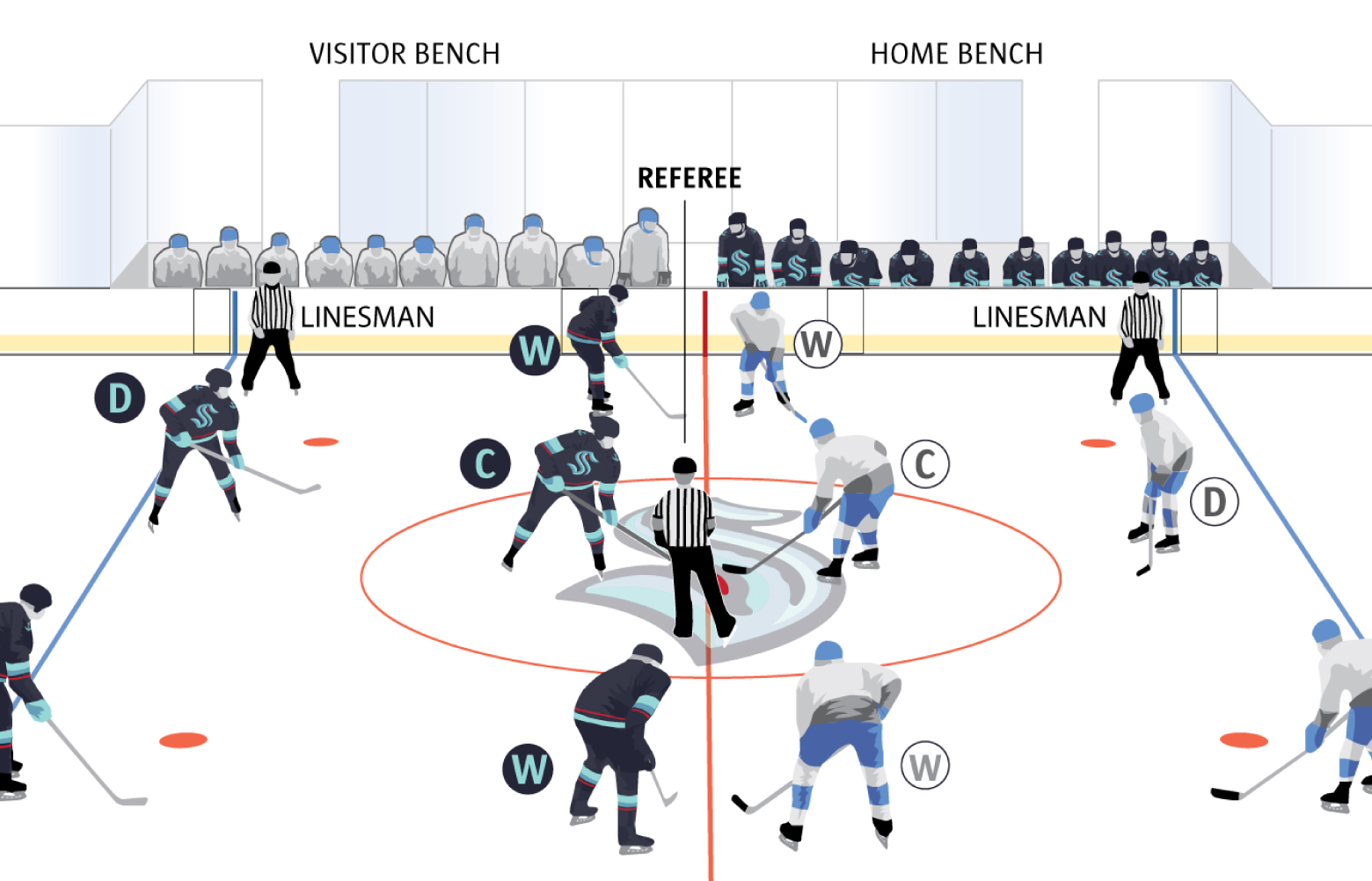Hockey is an exciting and fast-paced sport. It involves a lot of action and physical contact. Referees and linesmen play crucial roles in maintaining the game’s fairness and safety. But, do they often get injured during faceoffs? Let’s find out.
What is a Faceoff in Hockey?
A faceoff is a method to start play in hockey. Two opposing players face each other. The referee drops the puck between them. The players try to gain control of the puck. Faceoffs happen at the start of each period, after goals, and when play stops for various reasons.
Roles of Referees and Linesmen
Referees and linesmen have different roles in hockey. Referees enforce the rules and call penalties. Linesmen handle faceoffs and watch for offsides and icing. Both are essential for the smooth running of the game.
Referees
- Enforce game rules
- Call penalties
- Ensure player safety
Linesmen
- Handle faceoffs
- Watch for offsides and icing
- Assist referees
Risks Faced by Referees and Linesmen
Hockey is a physical game. Referees and linesmen are close to the action. They face various risks during faceoffs and throughout the game. Let’s explore some common risks they encounter.
Puck Injuries
The puck is hard and travels at high speeds. It can hit referees or linesmen during faceoffs. This can cause bruises, cuts, or more severe injuries.
Player Collisions
Players move quickly and with force. Referees and linesmen might get caught in collisions. This can lead to injuries like sprains or fractures.
Falls On The Ice
The ice surface is slippery. Referees and linesmen must skate well. Falls can happen, leading to injuries like bruises or broken bones.
Statistics on Injuries
Are injuries to referees and linesmen common during faceoffs? Let’s look at some statistics to get a clearer picture.
| Injury Type | Frequency |
|---|---|
| Puck Injuries | Rare |
| Player Collisions | Occasional |
| Falls on the Ice | Occasional |
Overall, injuries to referees and linesmen during faceoffs are not very common. They do happen, but not often.

Credit: projects.seattletimes.com
Safety Measures in Place
Safety is a top priority in hockey. Several measures help protect referees and linesmen from injuries. These measures aim to reduce risks and keep everyone safe.
Protective Gear
Referees and linesmen wear protective gear. This includes helmets, shin guards, and padded jerseys. The gear helps cushion impacts and prevent injuries.
Training And Experience
Referees and linesmen undergo extensive training. They learn how to avoid dangerous situations. Experience also plays a big role in their safety. Skilled officials know how to position themselves to stay safe.
Game Rules
Hockey rules aim to protect everyone on the ice. Certain rules reduce the chances of injuries. For example, players are penalized for dangerous actions. This helps keep the game safe for referees and linesmen.
Communication
Good communication is vital in hockey. Referees and linesmen use signals and whistles to communicate. This helps prevent misunderstandings and keeps everyone aware of what’s happening.

Credit: www.nytimes.com
Conclusion
Referees and linesmen do face risks during hockey faceoffs. However, injuries are not very common. Protective gear, training, and game rules help keep them safe. Hockey is a thrilling sport, and the officials play a key role in ensuring the game’s fairness and safety.
Do you have any more questions about hockey? Feel free to ask in the comments below!








